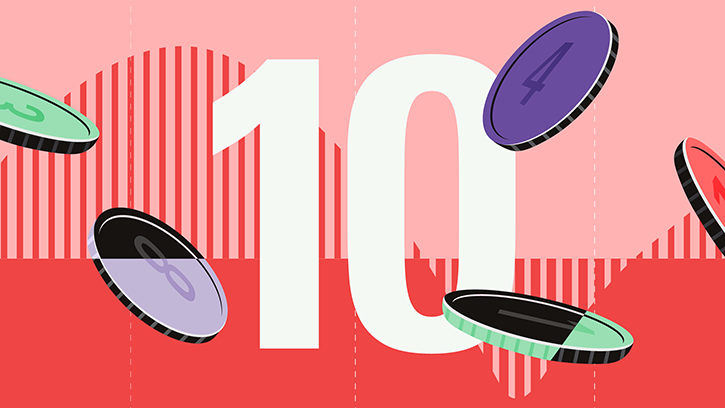
In August, the best performing Exchange traded products (ETPs) were topped by the Sprott Uranium Miners UCITS ETF Acc (URNM), which gained 13%. The uranium sector was the biggest winner in August (as well as Turkish stocks): there are in fact two other trackers (provided by VanEck and Global X) ranking among the best exposed to such metal, used as fuel for nuclear power plants.
Nuclear power is making a strong comeback in the energy programmes of many countries. In the US, for example, the ADVANCE Act was recently introduced in the Senate, a bill that “aims to support initiatives to develop and deploy new nuclear technologies both domestically and abroad, through actions such as facilitating the conversion of conventional energy sites and providing regulatory support for the development of advanced nuclear technologies,” explains Roberta Caselli, commodity research analyst at Global X.
France is not to be outdone: in June it announced a commitment of more than €100 million to revitalise its nuclear industry. The French Ministry for Energy Transition will invest these funds in training, research and innovation in the civil nuclear sector, following Macron's promise to revive the nuclear industry in February 2022. The UK also aims to increase energy security through nuclear power, in particular through modular reactors (SMRs).
Even more significant is the example of Canada, which after a 30-year hiatus is returning to revive its nuclear production. “To meet an increasing demand for electricity, Ontario is planning - in addition to the expansion of an existing plant that will become the largest in the world - the construction of three new compact modular reactors on the same site where another one is already being built,” Roberta Caselli comments.
The Global X analyst then points out that the nuclear revival is also of interest to emerging countries. “Turkey has recently declared its intention to develop 20 GW of nuclear power by mid-2050, while further east, Pakistan is collaborating with China to move away from its dependence on fossil fuels: the two countries have signed an agreement to build a $4.8 billion, 1,200 MW nuclear power plant, with the project - called Chasma 5 - to be developed in the heart of the Punjab. Saudi Arabia is also considering an offer from a Chinese state-owned company to build a nuclear power plant. This move could provide the Arab kingdom with strategic leverage in its ongoing discussions with the United States to create its own civil nuclear industry.”
“Meanwhile, the government of India is reviewing its Atomic Energy Act, with the aim of allowing private companies to enter the nuclear industry, which is currently controlled by the State.”
The third, fourth and fifth places in the ranking are occupied by three trackers of the MSCI Turkey, which rose almost 10 points in one of the worst months in recent years for the emerging markets universe.
President Recep Tayyip Erdogan said he is willing to give his new finance minister and central bank governor some leeway to abandon unorthodox policies, including ultra-low borrowing costs. The central bank raised interest rates by 7.5% this month, far more than expected, fuelling a rally in the country's stocks, currency and bonds.
Meanwhile, yearly inflation is close to 50% and the volatility of the lira pushed local investors to park their savings in shares. Equities reflect nominal profits and, as long as companies are able to pass on high inflation to customers, share values incorporate the effect of rising consumer prices. This can make stocks attractive to investors seeking to minimise the erosion of their savings.
Stocks traded on the Istanbul Stock Exchange thus benefited from buying by local investors seeking protection against rising inflation, as well as the consequences of China's growing economic problems and a Federal Reserve that says it is ready to continue raising interest rates. This is a marked turnaround from the first seven months of the year, when Turkish stocks posted one of the biggest losses among emerging markets.
The Laggards
The ranking of the worst performing ETFs in August, on the other hand, was led by the Global X Blockchain UCITS ETF USD Acc (BKCH), which lost 26.8%. The top five positions were occupied by thematic strategies exposed to digital assets and blockchain, confirming once again the difficult time the entire sector is experiencing.
The entire industry is going through a phase of high uncertainty, fuelled in particular by the waiting for the US Securities and Exchange Commission (SEC) decision on Bitcoin spot ETFs in the US. And right at the end of August, the SEC has delayed the decision on whether to approve applications for spot bitcoin exchange-traded funds (ETF) from Invesco, WisdomTree, and Valkyrie, pushing back the decision dates by several weeks to mid-October. Further delays are possible.
At the same time, green assets as solar stocks slumped in August and more broadly in 2023. Invesco Solar Energy UCITS ETF (ISUN), for instance, lost 14% last month and 24.6% since the start of the year (data in GBP, as of August 31). Even though there has been a booming demand for solar panels over the last year, stocks have been under pressure as falling prices compress margins and factory expansions raise fears of overcapacity, while investors are drawn to new sectors like artificial intelligence.
The same reasoning could also be made with electric vehicles, with the Electric Vehicle Charging Infrastructure UCITS ETF Acc (ELEC) down 17% in August and 24% for the year-to-date.
The Biggest
Monthly top and flop performers often coincide with very volatile and therefore risky products, which should play a satellite role in your portfolio. As such, we also include an overview of the biggest European-domiciled ETPs in terms of assets, which could be more appropriate to consider among core holdings. Performance in August 2023 range from +0.1% for the iShares Core € Corp Bond UCITS ETF EUR (IEAC), down to the iShares Core MSCI EM IMI UCITS ETF USD (EIMI), which lost 4.1%.
Methodology
According to Morningstar data, there are 32 percentage points between the best and worst performing ETPs in July, with returns for the month ranging from 26% to -6.3%.
We have looked at the key trends in the seventh month of the year, excluding inverse and leveraged funds. These instruments, being purely passive products, reflect the evolution of the markets without the bias (good or bad) of an active manager.








.jpg)



















